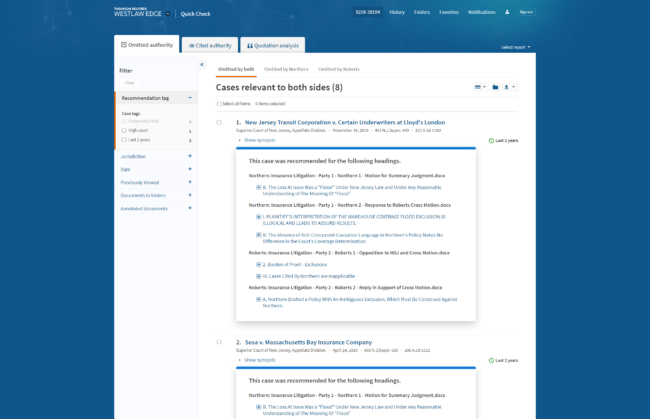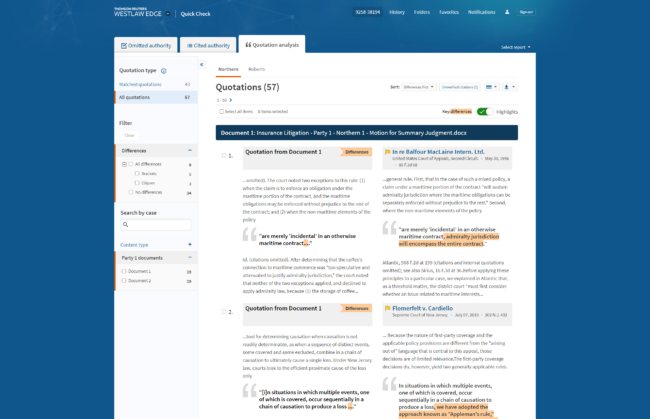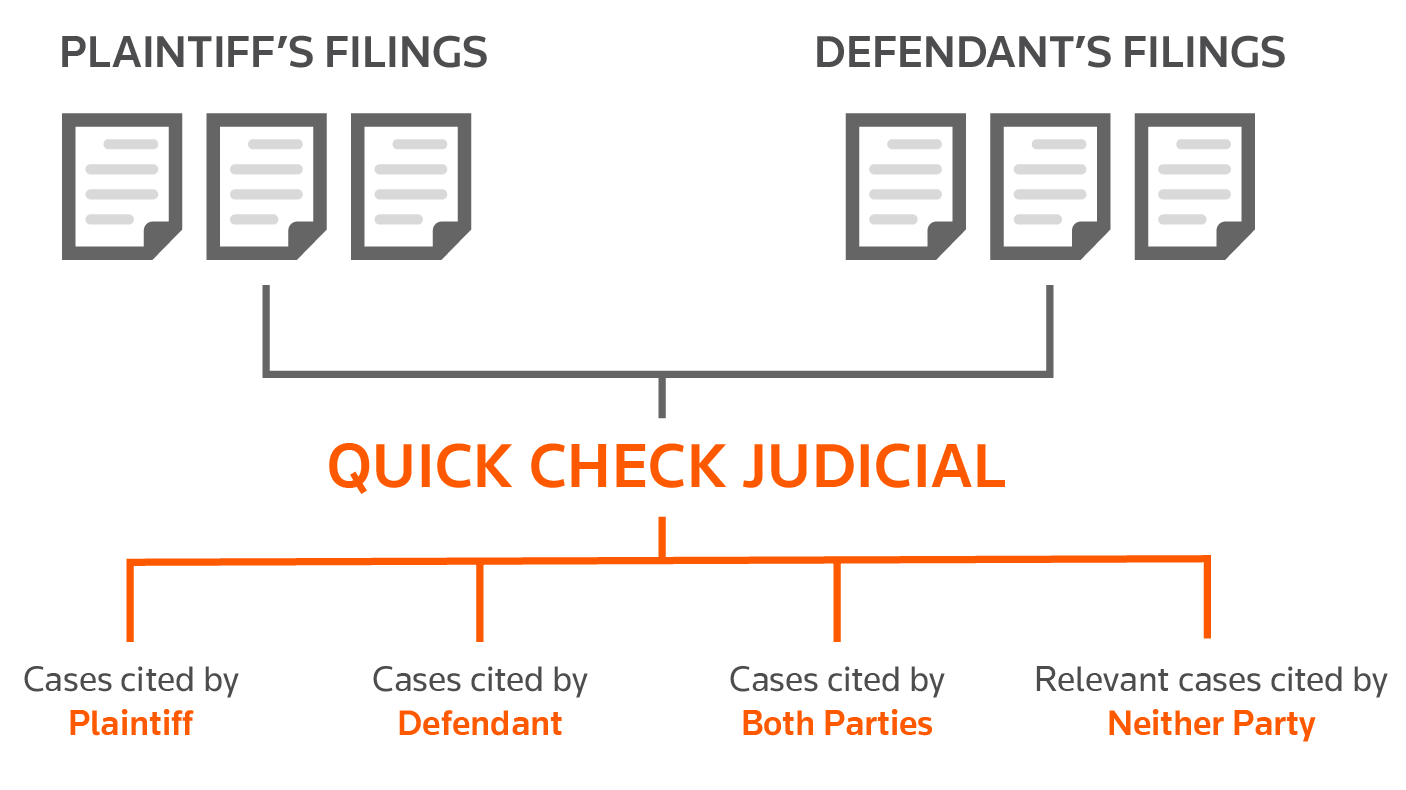Thomson Reuters is today introducing an artificial intelligence brief-checking tool designed to help judges understand and validate the briefs submitted in their courts.
But that begs the question: If your judge is using this tool to check the briefs of you and your opponents, then wouldn’t you want to use it first, before you ever file your brief?
The new tool, called Quick Check Judicial, is a feature provided within the Westlaw Edge legal research platform and it is available to all subscribers. It is a variation on Quick Check, the brief-checking tool TR introduced last year.

A judge can see relevant cases that both sides omitted.
As I explained last year, Quick Check is in the vein of other brief-checking products such as Casetext’s CARA. With it, a lawyer can upload a brief and Quick Check’s AI will suggest other relevant authorities that the document does not cite. It also warns of cited cases that may no longer be good law.
Quick Check Judicial takes that a step further, allowing a judge to upload multiple briefs from a single matter and compare them against each other. The judge will see all the cases cited by both parties in common, all the cases cited by only one party or the other, and relevant cases cited by neither party.
It also shows whether case quotations accurately reflect the cited case language in Westlaw Edge.

The tool compares case quotations in a brief against the original case.
Which judges will be using this? There is no way to know that, but we do know that TR last year signed a multi-year contract with the Administrative Office of the U.S. Courts to provide Westlaw Edge to the federal judiciary. So we know that federal judges, at least, have access to it.
Which brings us back to the question I asked above: If your judge is using this to review your briefs, wouldn’t you want to use it also?
That is precisely TR’s pitch with this product, for which the tagline is, “Built for judges. Essential for attorneys.”
And although it is built for judges, it is included with every Westlaw Edge subscription, which means you do not need a robe to use it.
 Robert Ambrogi Blog
Robert Ambrogi Blog